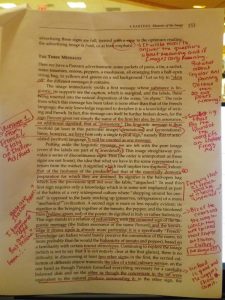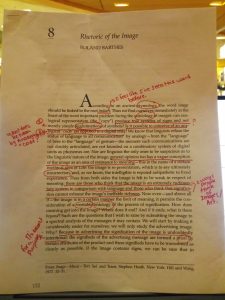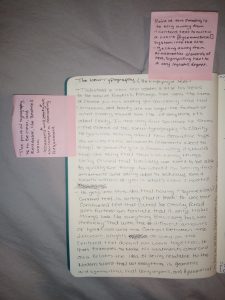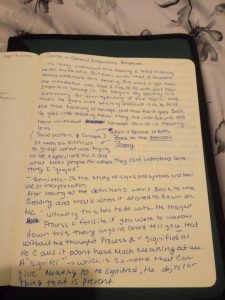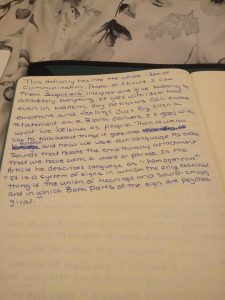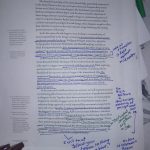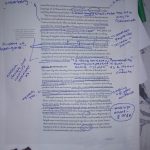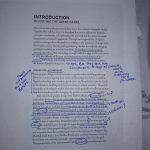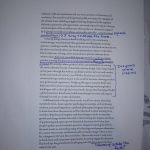Author: Carmen Diaz
Hw notes on rhetoric of the image #9 carmen diaz
Carmen Diaz sketch!
November 4th assignment
Carmen Diaz Hw Oct 28th
Marshell Mc Cluhan doesn’t regret the idea of technology but he isn’t against it either. In fact, he comes up with his own definition of what Technology really has done to our world around us. He goes into the idea that “media” is the new way of getting a message across. He describes how we have all kinds of media to help us get a message across to others. He talks about how its an extension of ourselves Its anything that extends the 5 senses and body. for instance, the wheel is an extension of the foot, or how the book itself is an extension of the eye. He even goes as for as to state that weapons are even a means of media. This theory relates a lot to what we have in today’s society because it contributes to the idea of even smartphones how they are a form of media and how we are being pulled to pay and be on our phones all day but it’s just an extension of our hands and thoughts.
I want to say that I disagree with the idea of a book being something that is not needed anymore. Book to me will always remain something that I could go back to. Tv has actually not been something that I fall back on. If anything I don’t like to watch Tv. It’s like when someone asks you what was better the book or the movie? I always feel compelled to say that the movie has no match to a book and how books make you feel. I have always been someone to disapprove of technology. In my opinion, I feel as though technology has been making our generation, not at all smarter but dumber! we have such a short attention span and our bodies are all becoming unhealthy due to all these forms of media that are supposedly trying to make our lives easier. But are they really?
Carmen Diaz
Carmen Diaz
Carmen Diaz reading response#2
Carmen Diaz
In this reading, I was able to really dig into what this book will be all about, I thought overall it was a very precise and specific way to speak to us readers. I appreciate the simple language. Moving on to what I got from the text, it captured my attention on how these writers/ designers see the way in which art and design have taken shape throughout the course of the centuries. Mainly what I read about was “what is the true meaning of design?” There are many theories on what design should mean and how graphic work should be perceived. One of the quotes that I completely agreed within this introduction was the idea behind “prosumerism” , which ties into the idea behind Collective Authorship, and how design is beginning to become a concept that absolutely everyone is into, and the idea that everyone out there is basically calling themselves designers. So I agreed with this statement in particular “what services and expertise do designers have to offer in a prosumer market?” I couldn’t help but ask myself what can I bring to the table, what will separate me from everyone else? Because if everyone now wants to design and call themselves creative designers then what makes me any different? The paragraph ends by stating “Graphic designers must take note and consciously position themselves within the prosumer culture or run the risk of being creatively sidelined by it.”
Another topic discussed briefly in this introduction was the idea behind seeking a bigger targeted audience. This goes into the the discussion about social responsibility, stating that designers are now looking deeper into the roots of our society and are socially and artistically coming up with ways to make a statement through designs, its not about satisfying a client anymore its about creating a change and letting consumers and everyone else know where the designers lie in terms of justice or injustice. One of the statements were ” Designers are actively engaging their societies politically and culturally, increasingly thinking globally inside a tightly networked world.” Just the other day in my communication design 2 class we were discussing how social issues have become part of the design and how people can really connect with designers work through just visually seeing a compelling piece.
The introduction also makes a lot of references to older theories of design and how some of our modern-day perspectives tie into ideas from time periods such as avant-garde or the Bauhaus. Also how some meaning of design connects and contrasts with influential designers such as El Lissitzky, Wolfgang Weingart, Josef Muller-Brockmann Paul Rand, and many more.
Down below are all of my notes/ questions that I wrote down while reading this text, I tend to always do this to all my book /readings I normally call it having a discussion with my readings!





